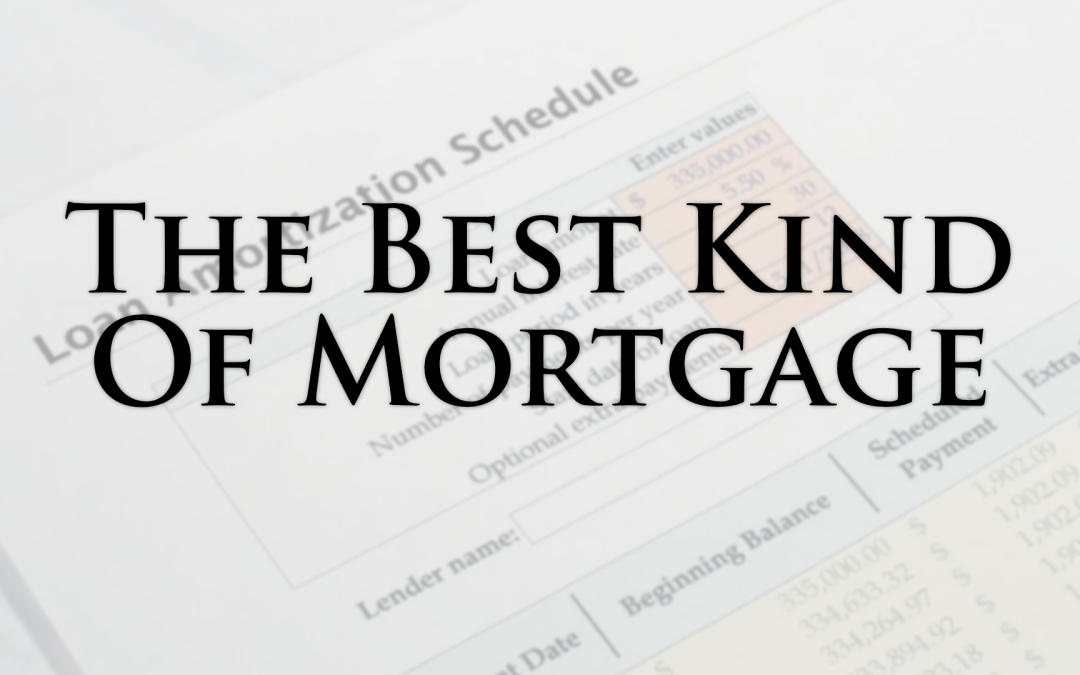Interest-only loans are my favorite type of real estate debt.
Yep, I know. It’s heretical.
Some say: “What? How could you ever get a property paid off if you pay zero toward principal? Your entire payment is lost to interest every month. That’s awful.”
I’ll double down.
Interest-only loans symbolize the triumph of financial freedom over debt freedom, an enduring GRE maxim.
I admit it. Before I ever bought real estate, I mistakenly thought that interest-only loans (I/Os) were garbage myself.
I was wrong. The abridged reason about why they’re often wise is: “Why would I pay anything toward principal if I don’t have to?”
Let’s compare.
Say that a “plain vanilla” 30-year amortizing loan means that your monthly payment is $1,300.
$300 pays down principal and $1,000 pays interest.
With an I/O instead, you simply pay $1,000 in monthly interest. That’s all.
What’s the result?
- Your cash flow has increased $300.
- Your principal paydown has decreased $300.
Financial freedom is achieved when you convert your equity to cash flow.
Congratulations. That’s exactly what you’ve just achieved with an I/O.
If you had trapped that $300 in the property, that would have built equity faster.
Inflation debases equity.
It’s worse. Equity is unsafe, illiquid, and its rate of return is always zero. (My explainer video on why.)
What kind of return could you achieve on that $300 elsewhere? Well, probably more than the interest rate on the loan.
More importantly, this extra $3,600 of annual cash flow could open up the time for you to watch all of your daughter’s softball games this summer.
It might grant you the opportunity to visit Yellowstone and Yosemite National Parks this year, building memories.
If you’re strictly in portfolio-building mode, an extra $3,600 could help you form a down payment for your next property faster.
You could simply set the money aside.
Are returns, liquidity, time, and opportunity more important than paying down the principal loan balance on your rental property at 432 Huckleberry Lane in Huntsville, Alabama?
Just like making an extra principal payment on an amortizing loan makes little sense, why make any principal payment at all if you don’t have to?
In fact, I/Os even provide you with flexibility. You don’t have to make a principal payment. But you can if you want to.
For those still concerned that their principal balance is not eroding, understand that inflation passively debases the weight of your nominal principal balance anyway.
But let’s address some I/O downsides:
- Expect to pay ~1/4% higher interest rate for this privilege.
- There are both adjustable and fixed-rate I/Os to learn about.
- After 5, 7, or 10 years, your bank makes you start paying down principal. This can drastically increase your monthly payment.
But after seven to ten years, it often makes sense to sell the property anyway. Some choose to refinance.
By that time, you’ve accumulated enough equity through market value to trade up for more property.
In fact, it’s virtually impossible to find any 10-year slice where real estate hasn’t appreciated substantially in nominal terms (or even any 7-year span).
There’s one quirk with I/Os: Real Estate Pays 5 Ways™ but you only enjoy 4. For each dollar of principal paydown lost, you’ve gained cash flow. Again, that’s a favorable trade.
This abundant thought paradigm can be rather jarring to the largely antiquated and scarcity-based “better get debt-free and save money” mindset.
In fact, I’ve heard I/O intransigents say something to the effect of: “Well… what if real estate goes down? Then you’d be glad that you paid down your loan, won’t you?”
No.
You’ll be happy that you had already separated the equity out instead, sheltering it from a down market.
I got my first I/O loan in 2007. I used it to buy a green, townhouse-style fourplex building for $530,000.
Soon, in the face of an awful housing downturn, the value plummeted to $480,000.
Though the fourplex kept cash-flowing, $50K of value (hence $50K in equity too) had temporarily evaporated. Gone.
If I had more equity in the property, the market would have taken it all away.
Please make your own decision when it comes to selecting a loan type. In my experience, when I/Os are available, they usually win.
Once again, today’s letter is emblematic of how one can elevate their financial education to create the freedom they ultimately seek.
I focus on how real wealth is built in the real world.
Thought getting your money to work for you creates wealth? It doesn’t! That’s a myth. My one-hour investing video course is now 100% free: Real Estate Pays 5 Ways. For a limited time, you can learn how wealth is really created, here.




